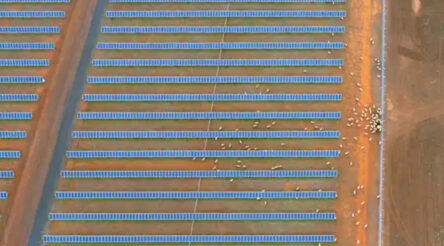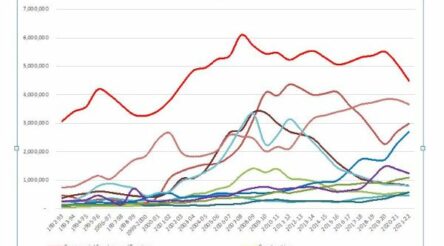A future without greenwashing – by Helen Millicer

Greenwashing is on the rise, and Australia’s regulations system for monitoring ‘green’ claims by manufacturers is not fit for purpose. Here Helen Millicer dissects the issues, and points to a system where claimed environmental benefits can be trusted by consumers and companies alike.
Every day we see yet another company claiming environmental benefits with their product or packaging – from ‘lower emissions’ to vague ‘better for the planet’ and even ‘ending plastic waste’.
But are we ready to meet the oncoming wave of new products and packaging promising a sustainable future?
In fact, we need a new approach – one which advantages customers as well as companies – to ensure we are truly heading to an environmentally sustainable destination and avoiding greenwashing?
Growing demand and supply
There is no doubt we are seeing an increase in products with green claims, as well as more consumers and buyers in business and governments seeking sustainability features in products and packaging.
In response there is a green transition taking place within companies and it is gaining pace.
And regulators are responding. In March and again in June the Australian Competition and Consumer Commission (ACCC) revealed they are
prioritising greenwashing, and particularly in manufacturing and energy sectors. The deputy chair Delia Rickard actually welcomed activist groups taking court action themselves.
The ACCC website says that any claim about a product and its packaging must be correct and able to be
substantiated, and there are fines for businesses that mislead consumers, whether the statement was intentional or not, incorrect or creates a false impression.
However, the complaint and greenwashing needs to be ‘material’ in impact, and there needs to be a consumer who is truly aggrieved or pedantic in the first place to actually make a complaint. It is not surprising there are very few prosecutions and greenwashing continues to the chagrin of many.
Is our system fit for the future?
It is time we reappraise and improve. The current model is not fit to meet the needs for rapid transformation, for both consumers and manufacturers.
We know that the decade to 2030 is critical to meet emission and temperature targets agreed at Paris in 2015.
We also know that we have challenges and need action to shift from non-circular products and packaging, remove toxic substances and remove elements that hamper reuse, repair and recyclability.
We also know that waste to landfill is still increasing and recycling of packaging has been largely static for the last decade.
With today’s policies and measures in play, Australia is still heading backwards on both emissions and planetary impacts.
The way ahead
So let’s be far clearer on what sort of information is required to support sustainable products and procurement, how that information is to be made available, and what efficient ways will industry sectors and governments set standards for the confidence of all stakeholders?
Perhaps the solution is to follow the lead of the Danes who have gone for a simpler, comprehensive, long term solution.
To reinforce their Green Deal objectives, targets and investments to lead and deliver results to repair the environment and be globally competitive the Danes are looking to life cycle assessments and industry certified ecolabels.
In March 2022, the European Commission announced legal initiatives to strengthen regulations for design of products for low emissions and circularity.
In December 2021, the Danish Consumer Ombudsman released new requirements for both general and specific environmental marketing claims concerning companies, production and/or products. In summary:
- Claims must be correct, clear for consumers and essential information must not be omitted
- Claims must be substantiated with evidence (by independent experts or verified by
independent experts).
The Guide explains that general environmental claims such as ‘environmentally friendly’ and ‘green’ may be misleading and only products with substantially better environmental performance than equivalent products can use such general terms. Further a life cycle assessment is required if such general
claims are used.
Finally, if a feature is required by law, such as minimum level of energy efficiency or toxicity in a product, a company cannot highlight that as a special feature.
So where to for Australia?
While such eco-labels, compliance and life cycle assessments may seem daunting for companies and industry associations in Australia, these measures provide many opportunities.
For example eco-labels and standardised certifications collectively improve disclosure, confidence, knowledge, expertise and lift our productivity and competitiveness.
The fact is this is a growing global requirement. Already European product and packaging with impressive verified official industry and/or government-backed eco-labels are selling into Australia and other nations.
Australia has a choice. We can continue with the current legacy system relying upon individuals to scrutinise each product/service’s claims and resort to court or regulator intervention.
Or Australian industry groups, manufacturers, training institutions, governments and regulators can work on improving our green credentials and systems, create new ones and industry baseline standards so our manufacturers can fairly compete and grow for a sustainable and productive future.
Helen Millicer is Director, One Planet Consulting. Helen is a circular economy guru with her work in energy, water, materials, organics for companies, influential associations and government on policy and programs. A Churchill Trust scholar in circular economy, Helen is an experienced board director and contributor to essential directions for Australia.
Picture: Helen Millicer
Subscribe to our free @AuManufacturing newsletter here.
@aumanufacturing Sections
Analysis and Commentary Awards Defence Manufacturing News Podcast Technology Videos










